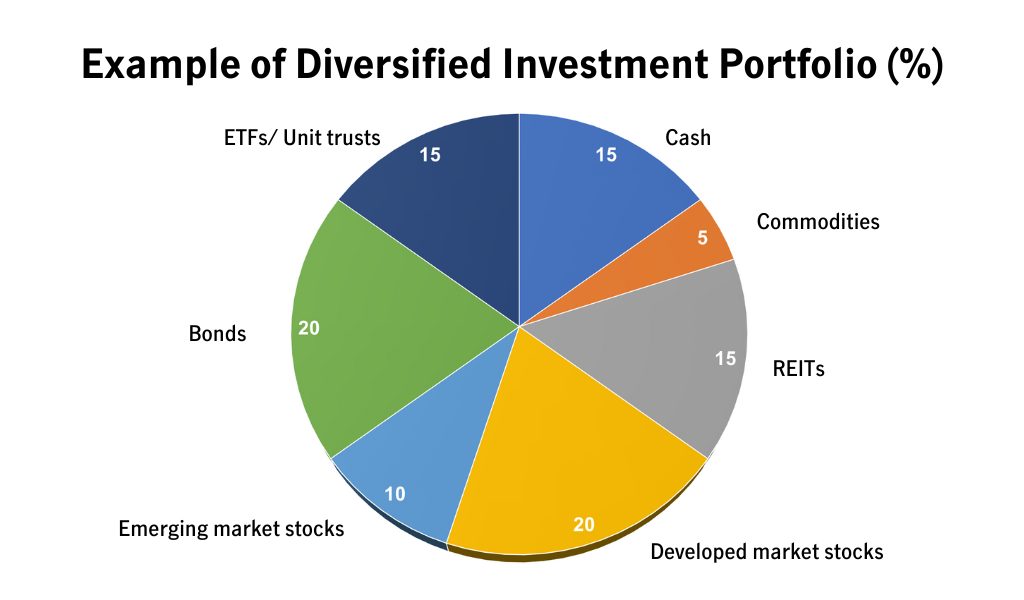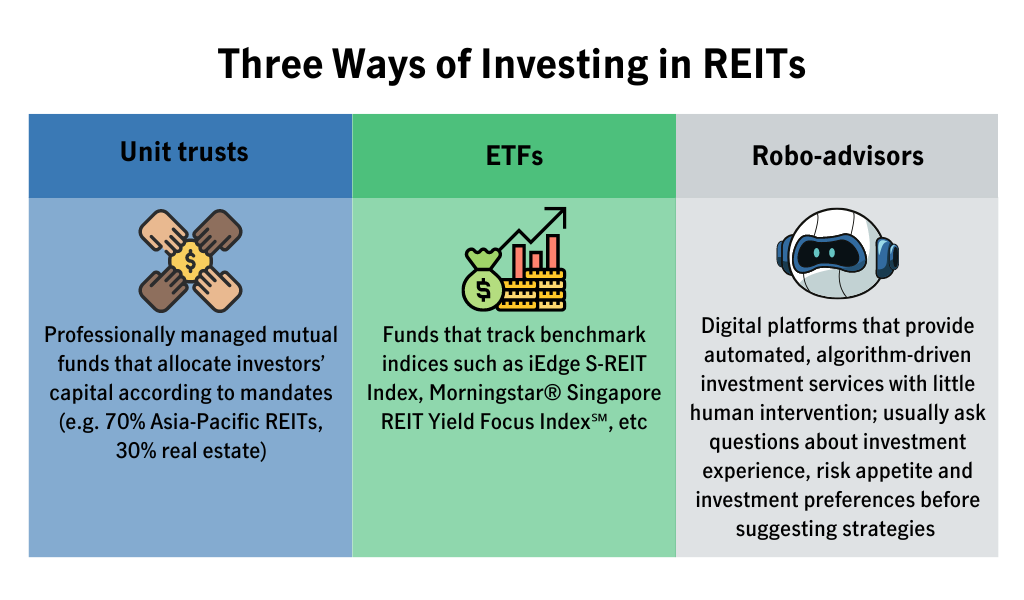28 September 2022
Diversifying Your Investment Portfolio

In our last article, we discussed how to open your CDP/custodian and brokerage accounts to get started on your investment journey.
Once these accounts are set up, you can proceed to do your due diligence and market research and decide on the stocks, REITs and bonds you want to invest in. Some resources you could explore include company annual reports, financial statements, analyst reports as well as media and blog articles. You should look into the macro fundamentals affecting each asset class and consider diversifying your portfolio. Build it slowly over time rather than take large positions all at once.
Here are some asset classes that together make up a diversified investment portfolio:
- Cash – Cash is most liquid in times of emergencies, but they lose value in the long term due to inflation.
- REITs – REITs, short for ‘real estate investment trusts’, are a type of professionally managed collective investment scheme which acquires, owns and finances income-generating real estate.
- Commodities – Three of the most commonly traded commodities include oil, gold, and base metals, which investors can access through futures, stocks, exchange-traded funds (ETFs), mutual funds or physical commodities.
- Developed/Emerging market stocks – These are stocks from countries with developed/emerging economies respectively (e.g. the U.S. versus Southeast Asia). Emerging market stocks usually offer higher potential returns with higher risks than developed market stocks.
- Bonds – Bonds are tradable units of corporate debt issued by companies and generally have lower returns than stocks but help to reduce the overall risk profile of your portfolio.
- ETFs – These are pooled investment securities that track an index, sector, commodity, or other assets, and are traded on a stock exchange.
- Unit trusts – Unit trusts are mutual funds made up of pooled money from investors that pass profits directly to investors rather than reinvesting in the fund.

Retirees and yield investors typically invest in REITs for their stable dividend yields. This glossary provides a list of financial metrics to look at when deciding which REITs to invest in. Did you know that there is more than one way of investing in REITs? Besides investing in individual counters, other ways of gaining exposure to the asset class include investing in unit trusts with underlying REITs, ETFs and robo-advisory portfolios.

Every investment carries risks, but careful consideration, continued monitoring of performance, and a long-term investment horizon can help to minimise these risks when investing. If you’re interested to learn more about investing, consider enrolling for online courses using your SkillsFuture credits and reading personal finance websites and blogs such as Seedly and Dollars And Sense which offer investment tips as well as knowledge about different asset classes and their trading performance. If you need a human touch, you can also engage a financial adviser to offer you personal guidance for your investment journey.
Our next article will look into the differences between onshore and offshore REITs. Stay tuned!
Sources:
- DBS, “Practical ways to invest in Reits”, 16 Feb 2022
- Seedly, “REIT ETFs: The Ultimate Singaporean Guide to Investing in 'Em”, 2 Dec 2021
- DBS, “How to start investing with a robo-advisor”, 25 Apr 2021
- Definitions of the various asset classes on investopedia.com
- REITAS, “Metrics to Consider”
Disclaimer: This article is for informational purposes only and shall not be construed as financial advice or an offer, invitation or solicitation of any offer to purchase or subscribe for any securities of Manulife US REIT in Singapore or any other jurisdiction nor should it or any part of it form the basis of, or be relied upon in connection with, any contract or commitment whatsoever. You should always do your due diligence and seek professional advice before making any investment decisions. None of the information presented are intended to form the basis for any investment decision, and no specific recommendations are intended.







